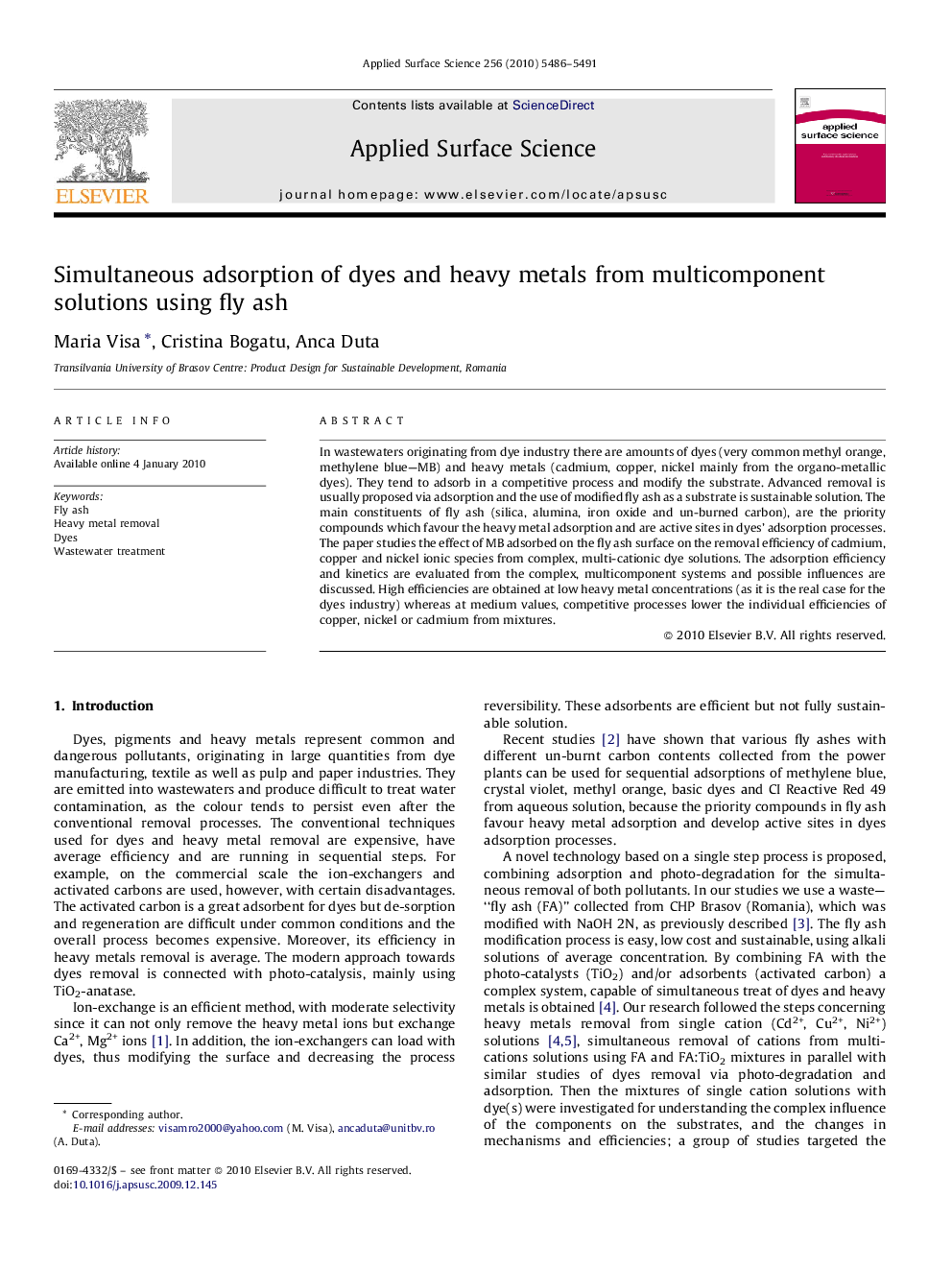| Article ID | Journal | Published Year | Pages | File Type |
|---|---|---|---|---|
| 5357896 | Applied Surface Science | 2010 | 6 Pages |
Abstract
In wastewaters originating from dye industry there are amounts of dyes (very common methyl orange, methylene blue-MB) and heavy metals (cadmium, copper, nickel mainly from the organo-metallic dyes). They tend to adsorb in a competitive process and modify the substrate. Advanced removal is usually proposed via adsorption and the use of modified fly ash as a substrate is sustainable solution. The main constituents of fly ash (silica, alumina, iron oxide and un-burned carbon), are the priority compounds which favour the heavy metal adsorption and are active sites in dyes' adsorption processes. The paper studies the effect of MB adsorbed on the fly ash surface on the removal efficiency of cadmium, copper and nickel ionic species from complex, multi-cationic dye solutions. The adsorption efficiency and kinetics are evaluated from the complex, multicomponent systems and possible influences are discussed. High efficiencies are obtained at low heavy metal concentrations (as it is the real case for the dyes industry) whereas at medium values, competitive processes lower the individual efficiencies of copper, nickel or cadmium from mixtures.
Related Topics
Physical Sciences and Engineering
Chemistry
Physical and Theoretical Chemistry
Authors
Maria Visa, Cristina Bogatu, Anca Duta,
